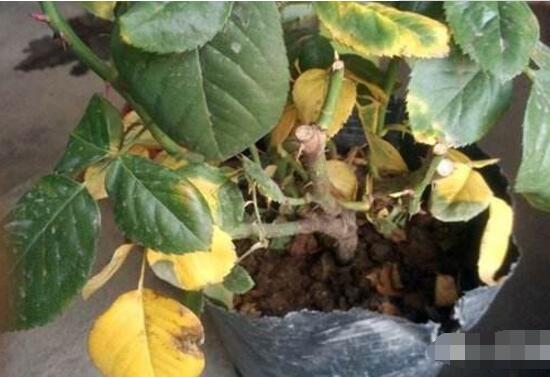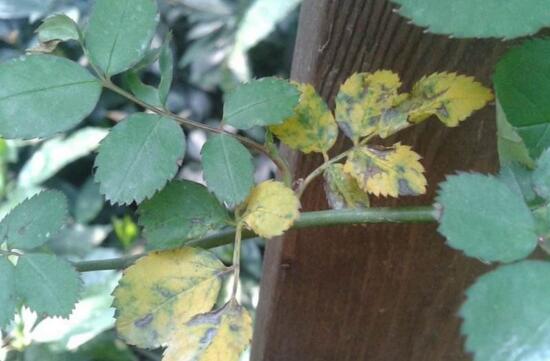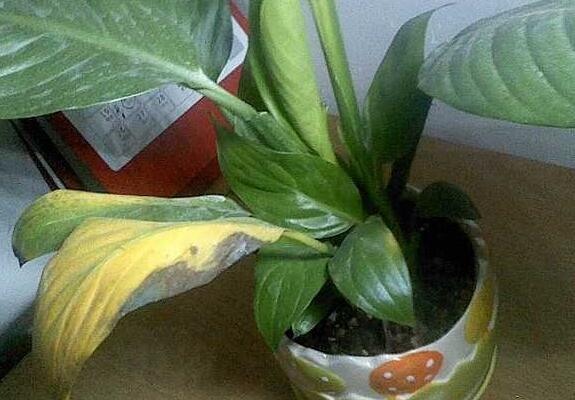What if the leaves of Chinese rose turn yellow and dry? the reason for the yellowing of rose flowers (cutting withered leaves and spraying)
Rose is a kind of indoor flower that is easy to raise. If you learn the cutting method of rose, you can make sure that one pot can be changed into ten pots. Earlier, we talked about how to raise rose flowers and the efficacy and function of rose flowers and taboos. Now we talk about a very common problem: what to do if the leaves of rose flowers turn yellow and dry. Rose leaves yellowing or withering I believe many people have encountered, let's talk about the solution.
First, the leaves of rose yellow and dry how to do, cut withered leaves spray

If your rose flowers turn yellow or dry, it must be your breeding method is wrong. At this time, we can judge the reason why the rose flowers turn yellow from the leaves, and the leaves will turn yellow if they are watered too much. Rose is a kind of plant that likes the sun. Without light for a long time, it will also cause rose to turn yellow. The solution to the disease will be different. What about the yellow and withered leaves of rose? First of all, the dead leaves should be removed, then the medicine should be sprayed.
Second, the causes and solutions of yellowing of rose flowers.
1. Too much watering leads to yellowing of leaves
Symptoms: if the leaves are yellowed due to improper watering, the tender leaves will be dark yellow and have no luster. The old leaves did not change obviously, the branches were thin and yellowish green, and the growth of new shoots shrank abnormally, which indicated that they were overwatered.
Solution: remove the plant from the pot and put it in a cool, ventilated place, wait for the soil to dry, and then put it back into the flowerpot.
2. Less watering leads to yellowing of leaves.
Disease: the yellow with too little water is different from the yellow with too much water. The yellow with less water shows that the leaf tip or edge is dry and withered, and the old leaf is withered and yellow from the bottom up, while the growth of the new leaf is relatively normal.
Solution: watering thoroughly at one time to ensure sufficient moisture. Rose watering standard: "do not dry do not water".
3. Virus attack
Symptoms: if the roots and branches of the rose are attacked by the virus, there will be this symptom, and the leaves will be unstretched and will be accompanied by yellowing, showing a lack of vitality.
Solution: control can be sprayed with virus gram and dew and other solvents, but to a comprehensive maintenance and management-based, robust plants will have a strong resistance.
4. Improper change of basin and soil
Although the work of changing the basin and soil sounds very simple, it is not easy to make the root system combine closely with the soil. You can use small sticks to help stabilize or gently pier the soil. The application of base fertilizer should choose mature fertilizer and stay away from the root system as far as possible. Avoid direct contact with the root. After changing the basin, the water should be watered thoroughly, maintained in a cool place, and the second watering should be carried out when the basin soil is slightly dry, and then the watering principle of "no dry, no watering" should be followed.
5. Improper pruning
Pruning is divided into growing season pruning and winter pruning. Growing season pruning is to cut off pedicels and dead branches in time after flowering, and cut off the tillers of rootstocks germinated at the base of grafted plants. Second, after 20 days of blooming in the previous crop, high-quality flower branches can be obtained by leaving 8 to 12 buds short for the flowering branches of the same year. Winter pruning is to promote the full return of nutrients in branches and leaves, preferably 3 to 4 weeks after frost.
The above are the most common problems and solutions for cultivating rose flowers. If your rose flowers have the above symptoms, you need to immediately reduce the yellowing and withered leaves, and then spray medicine. The above is the reason for the yellow rose flowers, rose leaves yellow and dry how to do all the answers, I hope to help you yo.
How to reproduce Chinese rose? what about the yellowing leaves of rose?
Rose flowers have a variety of varieties and beautiful colors, which are very suitable for decorating and beautifying homes, but many people know little about how to raise rose. So, how do Chinese roses reproduce? What if the leaves of Chinese rose turn yellow? The following will give you a detailed introduction.
How to reproduce Chinese rose
1. Cuttage propagation
Cuttings should be tender and pay attention to heat preservation and moisturization during cutting. The cutting time of Catharanthus roseus is usually in spring, and we try to cut off a relatively tender branch as a cutting. it can be a tender strip on a new branch or a new one on an old branch, always tender, with two or three leaves at the top, and then insert the bottom of the branch into the wet sand. Try to control the temperature between 20 and 25 degrees during cutting. after watering, you can cover the basin soil and cuttings with a film to moisturize, and put the basin soil in a cool, ventilated place to wait for rooting.
2. Water insertion propagation
Pay attention to changing water more frequently and quickly in summer. The selection of water cuttings of Catharanthus roseus is similar to that of ordinary cuttings, and the truncated branches can be inserted directly into clear water, but always change water for cuttings, preferably every two days, to ensure the content and cleanliness of nutrients in clear water. When necessary, you can also add a few drops of nutrient solution to promote the rooting of water cuttings. Generally speaking, it takes about 20 days to take root.
3. T-shaped grafting
It is easy to peel off the phloem when the plant has more water content in the seedling growing season. When grafting, the scion selects full buds on the full new shoots of the same year, cuts off the leaves, retains the petiole, then takes a little xylem, and cuts a knife edge of 1.5 cm in length and 0.5 cm in width to form a T-shape. Then the bone part of the tail of the budding knife is used to pick out the incision so that the phloem is separated from the xylem. After gently ripping off the xylem of the grafting bud, it was inserted into the opening of the rootstock, so that the upper flat edge of the grafted bud was aligned with the cross-cutting edge of the rootstock, and the grafted bud was closely consistent with the cambium of the rootstock. Bind the wound with a plastic tape with a width of 0.6 cm to 0.8 cm and a length of about 20 cm to 25 cm to close the wound, exposing buds and petioles. After 5-7 days, the petiole was poked with your fingers, and the petiole was easy to fall off, that is, the grafting was successful, and it was unbound in time about 15 days after survival.
4. Grafting with buds.
It is a kind of single bud grafting when the cortex of rootstock is not easy to peel off in autumn and winter. The buds can be slightly xylem and cut into olive shape. The part of the rootstock is also cut into a similar section like budding. In the lower part of the incision, 2-3mm cross-cutting is left, and the residual pile is left a little to facilitate bud implantation. Align the bud with the cambium of the rootstock (the cortex is aligned with the naked eye) and bind it. This method is usually used to cut roses in Shanghai from September to October. Rooting cuttings are produced in November. After indoor grafting, they are planted in the seedbed at a distance of 10 to 15 centimeters. Plant 45 plants per square meter. The seedling bed should be covered with film or placed in the greenhouse, when the new seedling height is 30cm to 40cm, it can be planted.
5. Striping breeding method
Peel the rose branches in a ring and bury them in the soil, or wrap them in wet soil; after peeling the new roots, the branches can be cut off and transplanted, and the survival rate can reach 100%. The disadvantage is that the number of reproduction is small and the time is long. it is suitable for family use and is not suitable for mass reproduction such as flower fields.
What if the leaves of Chinese rose turn yellow?
1. Overwatering: although the rose likes a humid environment, it can not be watered blindly. If excessive watering, the leaves of the rose will turn yellow. At this time, you only need less watering to return to normal.
2. Lighting: rose flowers are flowers that like light. It is generally best to keep the light time for more than six hours. If you are not exposed to the sun for a long time, it will also cause the leaves to turn yellow. It can be solved as long as you move out to bask in the sun.
3. Poor ventilation: poor ventilation is also one of the reasons why rose leaves turn yellow, because the dry and muggy environment is easy to make rose leaves yellow.
4. Temperature: rose is a kind of plant that likes to be warm and afraid of heat. Too high or too low temperature will make its leaves turn yellow. Pay attention to the temperature change of the environment.
5. Fertilization: sometimes, in order to make the rose flowers grow better, we will fertilize more. In fact, too much fertilization will lead to burning, and then the leaves will turn yellow.
6. Insect pests: when the rose is attacked by red spiders, scale insects and other pests, it will also cause the leaves to turn yellow, we need to remove the pests, we can make the rose healthy.
7. Soil: rose flowers like loose, well-drained soil. If the soil is hardened and the roots are not breathable, it will also cause yellowing of leaves and, in serious cases, plant death.
The above are some answers about how to reproduce rose flowers and how to make their leaves yellow. Is it clear to all? Please pay attention to more household knowledge.
How do the leaves of Chinese rose turn yellow? how do the leaves turn yellow and fall off?
Although the requirements of Chinese rose on climate and soil are not strict, it is more suitable for loam which is loose, fertile, rich in organic matter, slightly acidic and well drained. Sex likes a warm, sunny, well-ventilated environment. What if the rose leaves turn yellow? How do the leaves turn yellow and fall off? The following wed114 wedding network editor brings you the details.
What if the leaves of Chinese rose turn yellow?
1. Improper watering
The young leaves are dark yellow and have no luster, the old leaves do not change obviously, the branches are thin and yellowish green, and the growth of new shoots shrinks abnormally, which indicates that they are overwatered.
You need to remove the plant from the pot and put it in a cool, ventilated place and wait for the soil to dry before putting it back into the flowerpot.
The yellow with too little water is different from the yellow with too much water, the yellow with less water shows that the leaf tip or edge is dry and withered, the old leaf is withered and yellow from the bottom up, while the growth of the new leaf is relatively normal.
When watering, pay attention to "do not dry do not water", watering should be thoroughly watered to ensure sufficient water.
2. Improper fertilization
In the early stage of growth, it is best to apply light fertilizer frequently, mainly compound fertilizer, and adopt the method of hole application or pouring.
Do not apply immature organic fertilizers and large amounts of chemical fertilizers, which can burn roots, causing plants to wilt and die.
3. Viral yellow leaves
If the roots and leaves of the rose are damaged by the virus, there will be this symptom, and the leaves will be unstretched and will be accompanied by yellowing, showing a lack of vitality.
Control can be sprayed with virus gram and dew and other solvents, but to a comprehensive maintenance and management-based, robust plants will have a strong resistance.
4. Improper change of basin and soil
Although the work of changing the basin and soil sounds very simple, it is not easy to make the root system combine closely with the soil. You can use small sticks to help stabilize or gently pier the soil. The application of base fertilizer should choose mature fertilizer and stay away from the root system as far as possible. Avoid direct contact with the root.
After changing the basin, the water should be watered thoroughly, maintained in a cool place, and the second watering should be carried out when the basin soil is slightly dry, and then the watering principle of "no dry, no watering" should be followed.
There is no need to apply fertilizer for a short time after changing the basin, and it will be fertilized at least three weeks later.
In terms of changing the soil, if there is lime powder or too much acidity in the soil, it will also cause the leaves to turn yellow. If you don't want to turn your rose into "aged woman", then carry out effective maintenance and management in accordance with the above aspects, and you will certainly let the green dye all over the branches and leaves.
- Prev

How to do the rose leaves yellowing? pay attention to 5: 00 away from yellowing trouble / light is the key.
As a good product of indoor breeding, the rose is the object chosen by many novices, because it is not only easy to raise, but also very beautiful. However, in the process of breeding, because of improper maintenance and other problems, there will be symptoms of yellowing leaves, then how to do the leaves of roses yellowing? First of all, we need to calm down.
- Next

Plain sailing leaves yellowing how to do, pay attention to 7: 00 yellowing worry-free / cut off yellow leaves
Plain sailing, not only long and beautiful, the most important thing is the meaning of beautiful, so deeply loved by the majority of flower friends. However, in the breeding process, due to improper maintenance or long-term care, smooth sailing will get sick, followed by yellowing leaves, then smooth sailing leaves yellowing how to do? Actually, it's very simple.
Related
- Fuxing push coffee new agricultural production and marketing class: lack of small-scale processing plants
- Jujube rice field leisure farm deep ploughing Yilan for five years to create a space for organic food and play
- Nongyu Farm-A trial of organic papaya for brave women with advanced technology
- Four points for attention in the prevention and control of diseases and insect pests of edible fungi
- How to add nutrient solution to Edible Fungi
- Is there any good way to control edible fungus mites?
- Open Inoculation Technology of Edible Fungi
- Is there any clever way to use fertilizer for edible fungus in winter?
- What agents are used to kill the pathogens of edible fungi in the mushroom shed?
- Rapid drying of Edible Fungi

